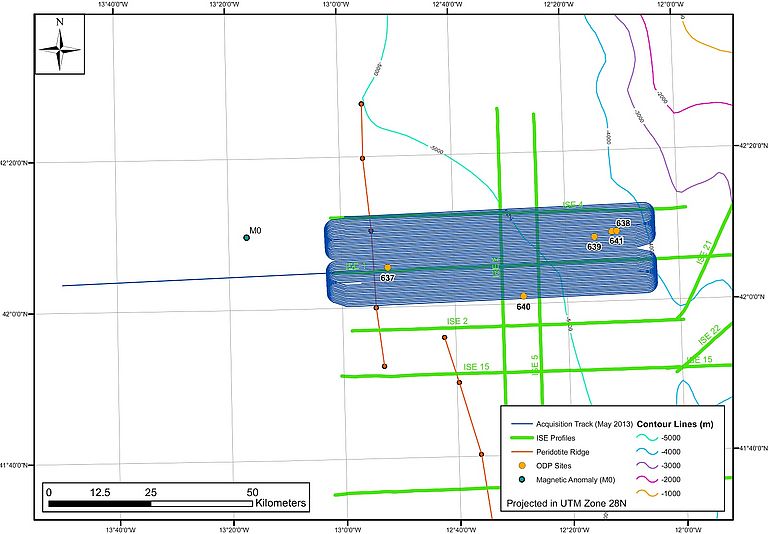The Birth of the Atlantic Ocean
Team of international scientists is looking for the cradle of the “Big Pond”
It's been quite a long time, an estimated 250 million years, since it was possible to reach Newfoundland from Spain on dry land. Then about 200 million years ago, the former continent of "Laurasia" broke apart, and the Atlantic was born. Since that time, the "Big Pond" widens by a few centimeters each year. Exactly how this birth of the Atlantic took place, however, has remained a bit of a mystery. Therefore, scientists from Britain, the U.S. and Germany are now departing on two research vessels in order to gain more information about the birth process.
Using the American research vessel MARCUS G. LANGSETH and the German research vessel POSEIDON from GEOMAR Helmholtz Centre for Ocean Research Kiel, the largest and entirely scientific 3D seismic survey to date will be conducted over the next two months. Over the course of the expedition, 3D images of the water column and up to 15 kilometers below the seabed over an area of 64 by 22 kilometers on the continental slope off the coast of Galicia (northern Spain) will be taken. In preparation for the large-scale experiment, GEOMAR scientists and their British colleagues will deploy 78 ocean-bottom seismometers (OBS) in the study area in May and June from R/V POSEIDON. The seismometers will then record the acoustic signals of the seismic system and provide additional information about the rock of the continental crust and upper mantle. This unprecedented record will then be used to further our understanding of the processes in the lithosphere during the breakup of continents. At the same time, the data will allow the study of possibilities and limitations for oceanographic investigations using seismic methods.
"It took nearly nine years of preparation for the experiment to finally take place," says Professor Tim Minshull of the University of Southampton Ocean and Earth Science (SOES) at the National Oceanography Centre, Southampton (UK). Professor Minshull, together with Dr. Dirk Kläschen from GEOMAR, coordinates the deployment of the ocean bottom seismometers.
"The relatively young method of 3D seismology, which we also apply at GEOMAR, allows us much richer insight into the structure of the seabed," said Dr. Kläschen. "Such an experiment is only possible as a well-coordinated international collaboration since no individual institute alone has all the necessary resources," said Kläschen. "We are excited about the upcoming results that will surely provide us with another piece to the puzzle of how our Earth works," explains Dr. Kläschen upon his departure.
News of this expedition will be made available in the coming weeks on an expedition blog at http://galicia3d.blogspot.co.uk/.
Contact:
Dr. Andreas Villwock (Communication & Media), Phone: +49-431 600-2802, avillwock(at)geomar.de




